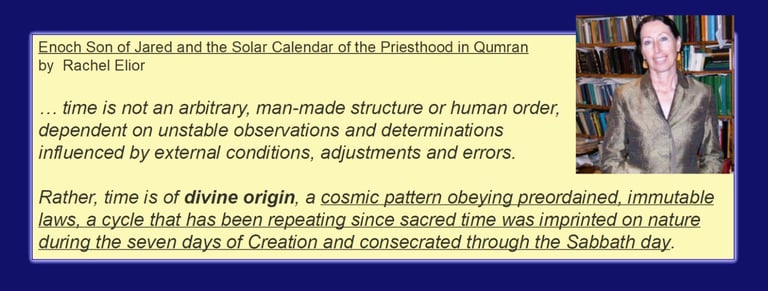
Keeping the 364-day Calendar Year on Track with the Solar Year - Part 3
Another aspect of the sabbath calendar where we witness some confusion or even some outright disregard is with understanding its schematic nature. The structural framework of the calendar is not chained to the natural occurrences of equinoxes and solstices, even though these 4 points of the year are vastly integral to its framework. And another thing- why must it begin in the middle of the week on a Wednesday every year?
BEGINNING OF MONTHSCYCLES OF TIMECREATION
Bill & Karen Bishop
2/28/202510 min read
In essence, we see that the year of the Zadokite Sabbath Calendar is actually self-correcting when we merely apply the most basic criteria. The majority of our modern-day confusion or disagreement appears outwardly to persist due to a general lack of understanding and an even greater reluctance to accept the simplicity of those criteria.
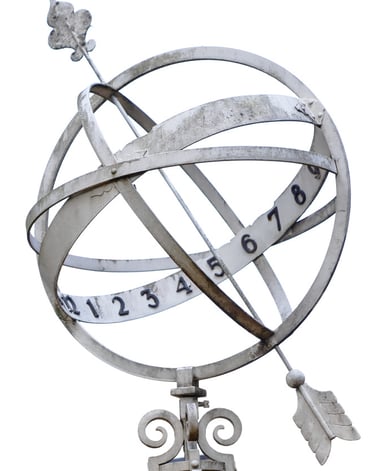

An Armillary-style Sundial
Part 3 - Weekday 4 and the Schematic Structure of the Sabbath Calendar
The fact that this calendar is of a schematic nature was a bit of a hurdle for us when we first began to investigate it. We were so used to basing our months and years on actual celestial occurrences, that this whole framework seemed kind of “contrived.” It seemed to be too simplistic, almost childish in its simplicity.
Well as it turned out, this was our first hint that we were beginning to see something very profound and very basic. We began gaining more insight into the patterns of time that were established in the very beginning of Creation with the fundamental cycles of days (evening/morning) culminating in a 7-day week, and that 52 of these 7-day weeks were masterfully translated into a symmetrical framework of 4 seasons with 3 months each, resulting in exactly 12 months for the year, every year.
In our research comparing the Dead Sea Scrolls (DSS) with Scripture, it also became obvious that months were simply a matter of counting 30 day intervals (as defined in the flood narrative, Genesis 7:11 & 8:3-4), and they are completely disassociated from the phases of the moon. We found an amazing consistency of patterns and a cyclical rhythm that is embedded in the very nature of the calendar's schematic design. This spoke very loudly to us regarding the Wisdom of YHWH to make His calendar so easy, so simple, yet so perfectly balanced throughout time.
Related articles for more information:
Conundrum - is it a problem if a Holy Day falls on a Weekly Sabbath?
Enoch Son of Jared and the Solar Calendar of the Priesthood in Qumran
Everything we need for knowing our Creator was designed and freely provided for us within the space-time continuum of the 7-day Week of Creation, which is a most fundamental building block of time itself. Every weekly Sabbath concludes another cycle of living, growing, learning, loving, suffering, fighting, surrendering ... bringing us back to our Creator who hallowed the seventh day for “resting” with His Creation.
There is nothing complicated about Yah's patterns and cycles of time, yet they are amazingly and divinely profound in bringing us a sense of knowing Him, even “walking” with Him as Adam and Chavah (Eve) once did.
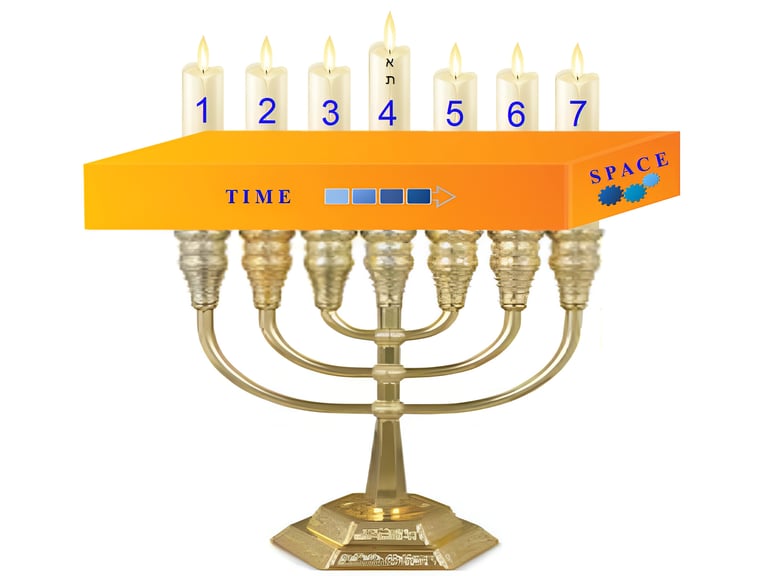

What are we really saying when we state that this calendar has a schematic structure ? Many of us are probably aware that a typical wiring diagram is called a schematic drawing. It provides a clear and neatly organized illustration showing how the components of an electrical circuit must be connected in order for the circuit to operate properly. Most gadgets or machinery contain multiple circuits, and a schematic is crucial to know the components and their proper connections for that gadget or machine to fulfill its purpose.
Schematic: (merriam-webster.com)
adjective - of or relating to a scheme or schema
noun - a schematic drawing or diagram
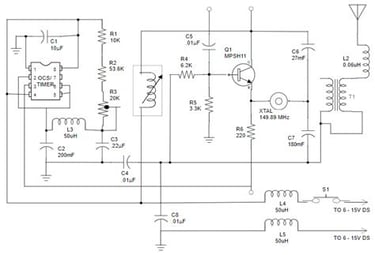

A schematic is a diagram of the "scheme" that is engineered into a device using a set of symbols for its various components and their connections. Electrical current is routed in well-defined pathways to the components, which in turn either function together or separately in accomplishing the intended purpose or "scheme" of the device.
A good schematic is the key to deciphering what can naturally appear to be a jumbled-up mess of wires and gizmos. Once we understand what the gizmos (components) are, then we can further understand the proper function of the overall mechanism by studying how these components are connected. The connections reveal the relationships that are engineered to exist between the components for the device to function successfully.
The idea of a schematic drawing is certainly not limited to electrical circuits. A schematic can identify the components of any system and designate their correct relationships - such as in a calendar system.
Any calendar is simply a system of organizing various cycles of time into a usable format. A calendar system is extremely important for enabling humans to have a common method of referencing various points in the past, present and future. A calendar system in general will employ some method of representing naturally repeating cycles of time, such as days, and there have been multitudes of calendars designed by mankind over the years.
The 364-day sabbath calendar is a perfectly symmetrical representation of a mathematically "imperfect" 365.25-day solar year. Days, seasons and years are naturally occurring cycles of time that are imperfect and uneven in their actual timing. Weeks and months are simply a "connection" of counting days, in which the day is the very first and most basic cycle of time created in the very beginning. Then when Yah hallowed the seventh day of Creation (Genesis 2:1-3), He also created a second divinely ordained cycle of time - the week (shabuwa). The ancient calendar of the DSS maintains a perfect rhythm of days and weeks throughout the 4 seasons and the 12 months of the year, every year, insuring that all sabbath and Holy Days are kept in order. Please see our article Conundrum concerning the importance of keeping Holy Days apart from the weekly sabbaths.
The continuity of 7-day weeks is the most profound characteristic of this calendar. Its schematic nature is based on 52 complete weeks (52x7=364), with 4 seasons of 91 days or 13 complete weeks (13x7=91, 91x4=364), with each season being comprised of three 30-day months plus 1 day that serves as a primary marker at the end of a season. So we have a year of 364 days that accurately diagrams a perfect alignment (the schematic connections) of the calendrical time cycles - days, weeks, months, seasons, years (the schematic components):
1 year = 364 days = 52 weeks (52x7)
1 year = 364 days = 12 months + 4 standalone days as seasonal markers ((12x30) + 4)
1 year = 364 days = 4 seasons (4x13 weeks = 4x13x7 = 4x91 days = 4(3x30+1))
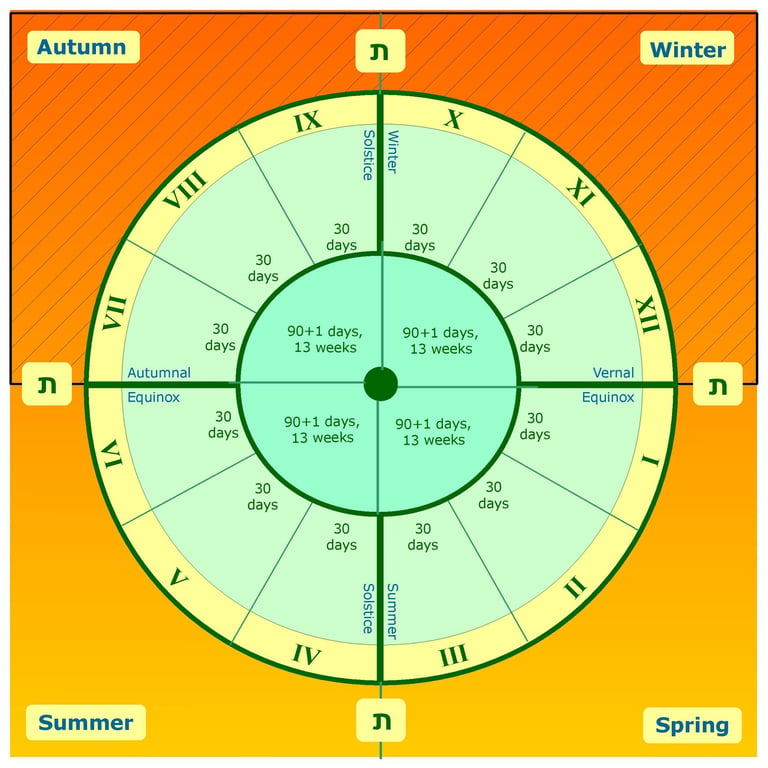

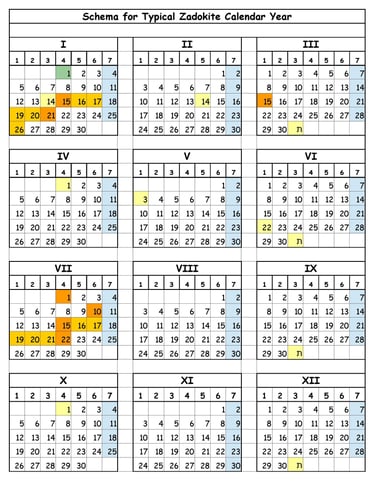

We have a calendar year of 364 days that is a schematic of the naturally occurring solar year which is about 365.25 days (please refer back to Part 1 regarding the factual necessity of intercalation in all calendars). It is crucially important to be cognizant of this simple fact: the calendar year and the solar year are two different measurements of time that are separate from each other. The solar year is the cycle that is completed from one vernal equinox to the next vernal equinox. It is "imperfect" in the sense that is doesn't have an even number of days or weeks. So the 364-day calendar year, which is perfect in the sense that is does have an even number of days and weeks, must be intercalated when it ends before the vernal equinox. The calendar year is a schematic diagram of a perfectly balanced year. The 364-day sabbath calendar serves as a system to represent the naturally occurring and "imperfectly balanced" solar year.
Equinoxes and solstices are the primary markers in a solar year (covered in Part 2), and the schematic framework of the sabbath calendar boldly commemorates these essential markers with a uniform solidarity of evenly balanced quarters throughout the year. The four standalone days of tekufah serve as a mighty testament to enforce a type of heavenly order in a disorderly world. A hallowed integrity is embedded in this calendar with keeping all sabbath days in their appointed order (moedim). The sacrosanct order of time is easily maintained when the sabbath calendar is coordinated with the only undeniable sign in the Spring that occurs equally and simultaneously upon the whole earth - the vernal equinox.
The schematic nature of the sabbath calendar is divinely based in its flow of 7-day weeks. It runs with a consistent uniformity of seasonal changes occurring in close proximity to the naturally occurring solstices and equinoxes. These annual solar events are only seen as indicators of the yearly cycle, and they along with the sun, moon and stars, are definitely not objects of worship for the sabbath calendar. The sabbath calendar is not directly chained to any celestial bodies, yet it will always embrace the natural cycles of time as depicted by the celestial bodies, primarily the sun (the greater light). Its very nature in maintaining the perfect flow of 7-day weeks and seasons requires its proper alignment with the natural year without being identically matched to any of the natural occurrences of equinox/solstice. Please understand that it is a schematic of a perfect 364-day year which probably existed at the beginning of time (1 Enoch 72:32), and now we are faced with an "imperfect" 365.25-day year. Only Yah could design a calendar so perfect and so simple, yet so profound, that it can function flawlessly in spite of the odd number of days in a solar year when we recognize the sacred utility of its schema!
We can also see Yah's inherent wisdom in the fact that the calendar always begins on a weekday-4. It is a steadfast memorial to the day that YHWH created the celestial lights for observable timekeeping on earth. Of course, time started to exist at the very beginning of Creation on Day-1. However, once plant life was established on Day-3, the daily and seasonal cycles of sun, moon and stars were critical for sustaining life. So weekday-4 is a commemoration of not only having the lights in the sky for observable timekeeping, but it is also an acknowledgment of our need for them to sustain life on the planet. YHWH created the perfect placement of earth in relation to the sun, moon and stars so that we can experience physical life in this bubble of space-time. The sun was given as the "greater light by day", and it is our primary source of heat and light. It was on Day-4, that physical life was enabled to abound, coming out of the darkness and into the light. Just as each day of Creation built upon the day preceding it, weekday-4 became the “fulcrum” of the week where the balance of life and life-cycles can prosper in His Light toward our eventual, permanent Shabbat with Him.
Weekday-4 has a bountiful, spiritual significance, and its utility of beginning the years and seasons also has a very practical side to it. It is because of this one single criteria (the 1st day of the 1st month always being on a weekday-4) that the whole schematic structure of this calendar can remain intact. There is a sacredness of divine time in the uninterrupted flow of complete 7-day weeks, and pinpointing weekday-4 as the starting point that was established in Creation keeps all the sabbaths and Holy Days in their appointed order. If any extra day is added to the year, the flow of weeks is interrupted. There can only be 7 days in a week; no more, no less. This means that a year must be 364 days at a minimum to incorporate the full breadth of 12 months and 4 seasons which results in a minimum of 52 7-day weeks. The minute we tamper with the schema of this basic structure in any way, then the whole order of perfection already present in the sabbath calendar becomes mutilated and nullified. When we simply allow the schema to work according to its basic nature, it "self-adjusts" with a periodic 53 week calendar year. The extra week serves to bolster the integrity of the schema, thereby sustaining its even flow of sabbaths and Holy Days in their proper seasons (Leviticus 23:4).
We hope this has given you a more palpable sense of the heavenly essence in the sabbath calendar. It has a schema rooted in the divine patterns of time created by YHWH; its operation is extremely simple and straightforward. There are a lot of “hidden” nuances embedded within it that keep showing us the Hand of YHWH and His Amazing Creation that we are so blessed to be a part of. He has a perfect plan in place, and we are eagerly looking for the “day” when we can be fully restored into His Kingdom. One day at a time, throughout the cycles of time, we learn, we grow, we come closer to whatever our fateful end might be. The discovery of this ancient calendar in the DSS is one of the greatest blessings we've seen yet!
Designed by FreePik - www.freepik.com
As you can see, all the calendrical components (the cycles of time) are harmoniously aligned in a simple, perfectly balanced schema. Imagine a time-keeping concept of "wheels within wheels" (which is how a watch or a clock actually works), where the primary structure is that of a 4-spoke wheel, marked by 4 specific days that are designated with a Hebrew tav in the schema, meaning tekufah, or "transition". The pattern of days/weeks/months is identical for each season with the layout of the 1st, 2nd, 3rd months being duplicated 4 times. The seasons are always equal in length, and there are always 12 months. At the end of each season, there is an extra day, the day of transition or tekufah, with the next day being the first day or chodesh (new beginning) of a new month and new season. Please refer to our article, Help Me Understand Chodesh & Tekufah - Please! for more information about these two terms.
The four days of tekufah always occur on a weekday-3 (Tuesday), and the following day of chodesh is always on a weekday-4 (Wednesday). The tekufah at the end of the 12th month also marks the end of the 52nd week and the end of the calendar year. As the calendar year approaches its conclusion during that 52nd week, we need to recognize the timing of the vernal equinox to know if the solar year has ended too. The new calendar year can begin on the weekday-4 immediately following the tekufah of Month-XII if the equinox has already occurred, or if it actually does occur on that same weekday-4. Otherwise, we simply wait 7 more days for the next weekday-4 to begin the 364-day calendar year. The schematic nature of the sabbath calendar provides us with this self-correcting mechanism to keep it on track with the natural solar year. This simple, default method seems to be one of the most difficult aspects of the sabbath calendar for many people to grasp or accept. There is nothing inherently wrong with the sabbath calendar, and it does not need to be "fixed".
Exploring the ancient priestly calendar system found in the Dead Sea Scrolls
info@returningtothegarden.com
Privacy Policy
Terms and Conditions
The Sabbath Calendar Journal:
PO Box 64
Glasgow, KY 42142
Bill & Karen Bishop
info@sabbathcalendar.org
We greatly appreciate your support. Please be advised that The Sabbath Calendar Journal is not a 501 (c)(3) organization, so donations are not tax-deductible. It is a true joy to serve in spirit and truth according to the "laws" of Yah's Word without the pitfall of additional bureaucratic regulations. With your heartfelt donations, may we all be greatly rewarded in His Mercy!
© 2024 The Sabbath Calendar Journal. All rights reserved.
All Holy Bible quotations are from the King James Version (KJV) unless otherwise noted.

